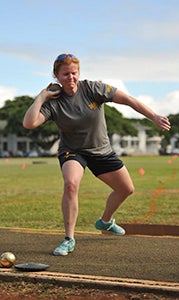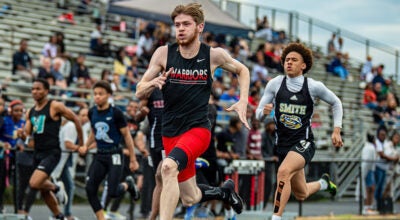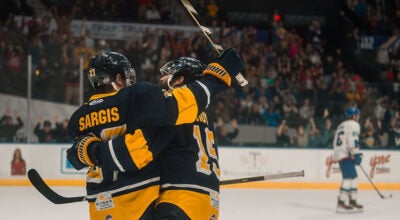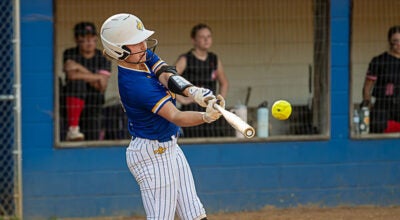In the company of Warriors
Published 9:09 pm Tuesday, June 30, 2015
A difficult reality confronts injured and ill veterans who return home from the tragic experiences of war, seeking to talk to someone about it.

Retired Petty Officer 1st Class Shahnaz Askins, formerly of the U.S. Navy, competes for the Navy/Coast Guard team during the recent 2015 Department of Defense Warrior Games in Quantico. The event brings together wounded, ill and injured service members and veterans.
So many they would talk to have no idea what it was like.
“You almost feel like, in a sense, you’re trapped,” said 38-year-old Petty Officer 1st Class Shahnaz Askins, of Suffolk.
The question for her and others becomes, “Can somebody please understand me?”
When they cannot find anyone who can honestly say, “I can,” these veterans become more depressed, feeling they are alone, Askins said.
But for her and many other injured and ill veterans, the Warrior Games serve as the gateway to the understanding they have sought.
The Warrior Games were founded in 2010 to encourage wounded, ill and injured service members and veterans to stay physically active through adaptive sports.
This year, the Warrior Games were run by the Department of Defense and held June 19-28 in Quantico. There were eight different sporting events with approximately 250 athletes representing teams from the Army, Marine Corps, Navy/Coast Guard, Air Force, U.S. Special Operations Command and the British Armed Forces.
Askins said the Games are like “a group therapy but in the format of sports.”
While deployed in Iraq in 2004, her experiences in combat led to post-traumatic stress disorder and other disabilities. Her condition was further aggravated during a subsequent deployment to Kuwait, and she did not receive treatment for her condition until 2009.
In the wake of these difficulties, the Warrior Games have helped her in a variety of ways. They have served as an outlet for her natural competitiveness.
But even more than that, they have helped her form a camaraderie with other wounded or ill service members, particularly in this, her second year competing in the Games.
“Yes, it’s the competition and all the armed forces are going against each other,” Askins said. But this year, “being able to come back and see people from last year, it’s like, ‘Oh, hey! How are you doing?’ That, to me, was more meaningful. So in a sense, you kind of grow with your counterparts, and you can see them also getting better, as well.”
There is an important relationship that exists between her and these counterparts outside of just being competitors in the Games. While around these veterans, “you don’t feel like you’re being judged, you can be transparent because we’re all going through some sort of struggle,” she said. “They understand.”
And within the Games, they are all exercising a fighting spirit to better themselves in some form or fashion, Askins said.
In 2014, she competed in swimming and track and field events. This year, she again participated in track and field events and tried cycling for the first time, competing in the women’s 20-kilometer race.
She noted that after completing the race, she talked to the USA coach for cycling, who had worked with her leading up to the competition.
“He said I did very well for my first time and that I did everything that they taught me to do,” she said.
She finished the race with a time of 44:35.10, placing eighth out of nine participants, but she had close company.
During the race, she found herself near a Marine and a British service member. Only the top three finishers would score points for their teams, and they knew they would not be among them.
“We decided to work together, and we went across the line together,” Askins said.
She improved on her performance last year in the throwing events, producing personal records in both the discus throw and the shot put.
She placed fifth in the women’s discus throw standing 6.0 event, with a 22.42-meter mark, more than three meters better than her previous best.
In the women’s shot put standing 6.0 event, she placed 10th with a 7.36-meter mark, a 1.36-meter improvement on last year’s mark.
Askins’ time in the women’s 100-meter dash 6.0 event was hurt by a rushed start as event organizers sought to avoid approaching inclement weather. She took fifth out of five competitors, finishing in 18.47 seconds.
The women’s 200-meter dash 6.0 was her final event of the Games. She finished in 40.7 seconds, and though she was well behind her average time as she ran, the spirit of camaraderie that the Games inspired in her helped her finish the race.
“I was like, ‘You know what? I’m doing this for the team,’” she said.






